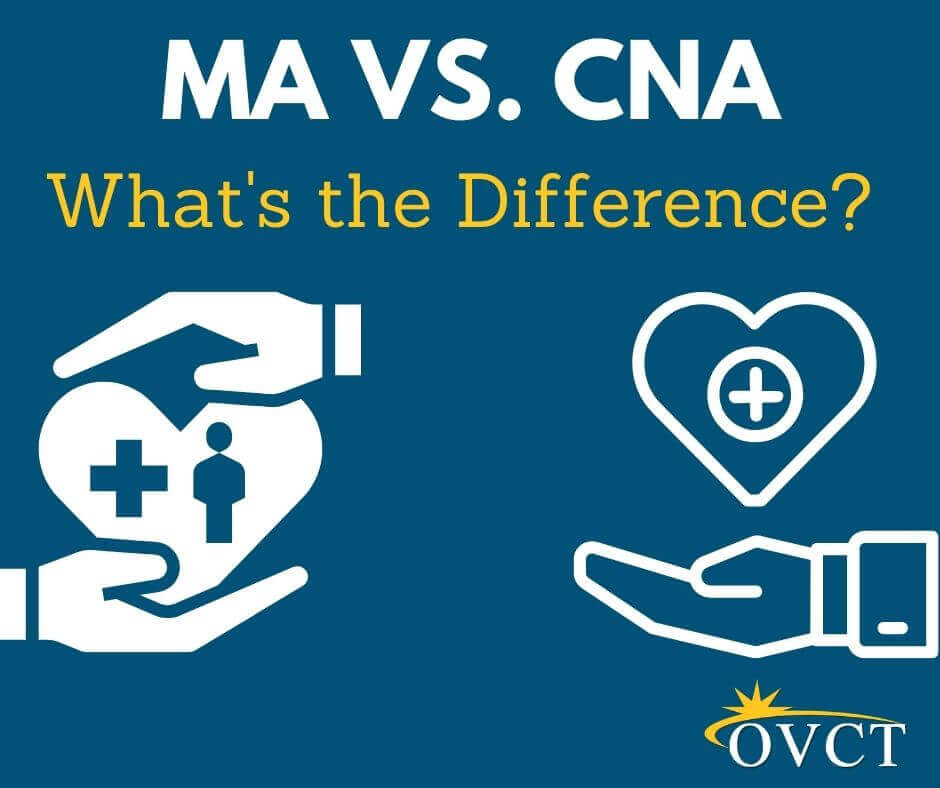There are terrific reasons why a lot of people would like to start a career in healthcare. There is continuous growth within the healthcare industry and various job options available. Starting a career in healthcare also allows you to help people by making a difference in their life when it’s needed the most.
There are many opportunities for starting a career in healthcare, and it can be difficult to figure things out by yourself. Bearing this in mind, we’re here to help by providing a breakdown of the differences between certified nursing assistants and medical assistants.
Career Outlook
The job outlook for medical assistants is budding. Data from the Bureau of Labor Statistics states that the expected growth rate for medical assistants in the US from 2019-2029 is 19%, which is much higher than the 4% average growth rate for other professions. In essence, we will need more medical assistants in the future, and employers will require qualified people for these positions.
For certified nursing assistants within the United States, the BLS projects the growth rate will be 8% between 2019 and 2029. This is still higher than the average growth rate of 4%, but not as high as the growth rate for medical assistants.
Skills Required
Medical assistants complete a wide range of duties for the job, involving clinical and administrative responsibilities that are focused on evaluating patients and assisting doctors with care and treatment. Taking vital signs, assisting with examinations, administering injections, prepping lab tests, and managing patient information are skills a medical assistant needs to learn.
Taking vital signs, assisting with examinations, administering injections, prepping lab tests, and managing patient information are skills a medical assistant needs to learn.
At East Ohio, medical assisting students get the opportunity to complete practical skills within a real healthcare environment while in their externship. These hands-on experiences give students an edge and allow them to be more successful once they start applying for jobs to begin their careers.
Certified nursing assistants are more focused on direct patient care and assisting with the activities of daily living. They carry out tasks such as bathing and cleaning patients, getting them dressed, assisting them in the restroom, and transporting them between beds and wheelchairs. Feeding patients and changing linens are also on the list of necessary skills for a certified nursing assistant.
Training Needed
To begin a career as a medical assistant, you will need specific training to prepare you for the job requirements. Many medical assisting programs available can be completed within a two-year period, and they include classroom instruction as well as hands-on training. We recommend choosing a medical assisting training program that prepares you for a professional certification, as many employers have a preference for candidates who possess these credentials.
For instance, our Medical Assisting program at East Ohio allows students to get valuable training and obtain hands-on experience in their medical assisting labs, classes, and externships. Students are prepped for a healthcare certification specific to working as a medical assistant, which is the Certified Clinical Medical Assistant* certification.
Becoming a certified nursing assistant requires specialized training, and it is normally completed within six months. This training has to be state-approved and usually teaches patient safety, direct patient care, and documentation. It is a requirement for CNAs to pass a competency exam and finish a number of hands-on clinical hours that vary by state.
Work Environment
According to data from BLS, medical assistants are more likely to work in a physician’s office, with 57% employed in this setting in 2019 and an additional 15% working in a hospital setting, while the remainder worked in outpatient care centers and chiropractors. Many medical assistants are full-time professionals who work 40-hour workweeks. For example, in facilities that remain open, hospitals may be required to work evenings, weekends, and holidays.
According to BLS, nursing assistants most likely work in nursing care centers, with 37% employed there, and at hospitals, with 27% employed there. The remaining nursing assistants work in-home healthcare services, retirement and assisted living facilities, and in government. The requirements for the job are more strenuous and demanding, as CNAs are frequently on their feet and are expected to be able to lift 50 pounds or more. A majority of certified nursing assistants will complete a full-time work schedule, but others may work part-time. They may also be assigned longer shift times and complete more hours on the night shift, weekends, and holidays.
Get Started
You are now more aware of the differences between medical assistants and certified nursing assistants! If you’ve chosen medical assisting as your career path, you may be a great fit for our Medical Assisting program. We offer hands-on instruction, academic support, and career services and are here to help you achieve your career goals. Contact us for more information today and start your career journey with East Ohio!
*Certification is contingent upon passing the corresponding industry certification exam. Required/included in tuition/fees.
